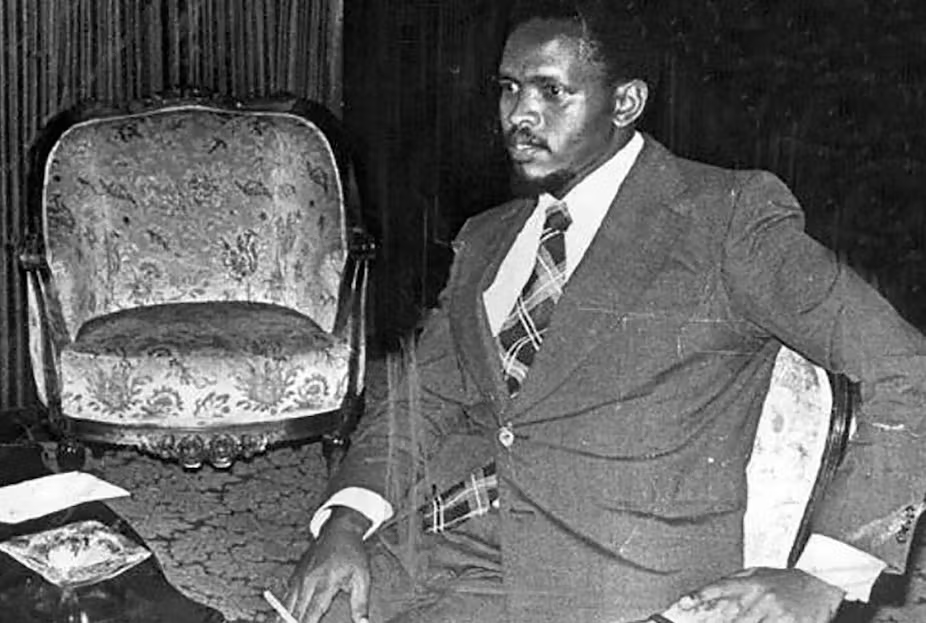As U.S. officials continue their efforts to broker Israeli-Saudi normalization, the clock also keeps ticking on one of its most important potential byproducts: a formal U.S. defense pact with the kingdom. Yet expanding military and defense cooperation with the Saudis need not be bound by the compressed timeline and uncertain outcome of the current normalization talks—there is much that Washington and Riyadh can do within and beyond that discussion to bolster their defense industrial bases and establish the kingdom as a regional hub for air and missile defense operations.
Expanding Military Cooperation
U.S.-Saudi military cooperation began with the construction of Dhahran Airfield (now King Abdulaziz Air Base) under a 1945 agreement, initially for World War II logistics and later as a strategic Cold War base. In the 1980s, the two countries collaborated to support the Afghan mujahedin against the Soviet invasion. Later, they cooperated to contain Saddam Hussein’s Iraq and Iran’s destabilizing regional activity.
Over the decades, the partnership has grown to encompass a wide range of military drills. For instance, two multilateral exercises have helped enhance capabilities and interoperability: “Red Flag,” held regularly in the United States with a focus on advanced air combat training, and “Eagle Resolve,” held biannually in Gulf Cooperation Council nations and focusing on joint multi-domain interoperability. Others—like the “Red Sands” series focused on countering drones—integrate emerging technologies in real-world scenarios, providing essential learning opportunities for both nations’ armed forces.
To intensify this cooperation, Washington should expand on the above exercises and encourage larger, more sophisticated joint and multilateral training opportunities similar to the multi-domain Juniper Oak exercises it has held with Israel. This would have the added benefit of bolstering deterrence against Iran, even if the exercises are not explicitly described in this manner.
Spurring Innovation, Invigorating Industry
The United States has long been Saudi Arabia’s primary source for weapons, training, and support, and boosting this relationship is crucial to the technological development and operational readiness of the kingdom’s armed forces. Riyadh consistently has one of world’s largest defense budgets, reportedly spending $69 billion on this sector in 2023. It is also America’s largest Foreign Military Sales customer, with a $140 billion FMS program.
Yet the FMS process can be frustrating for allies and industry alike because it is slow to deliver and administratively burdensome. An FMS dollar is worth less than a dollar spent in other sectors due to the rigorous accounting and reporting procedures mandated by Congress and the Pentagon under the Arms Export Control Act. These requirements impose significant costs on existing contractors and are a significant barrier to entry for small and midsize companies.
Nevertheless, certain workarounds could benefit the industry while still serving bilateral security interests. Of particular relevance are two goals in Saudi Arabia’s ambitious Vision 2030 plan: to spend 50 percent of its military budget domestically, and to require that foreign defense firms open offices inside the kingdom or establish partnerships with local firms. Boeing has already responded to the call by signing onto a joint venture for aircraft maintenance with Saudi Arabian Military Industries (SAMI), to include “not only sustainment, but also manufacturing, training, engineering, and R&D.” Lockheed Martin has likewise established a Saudi partnership to produce components for the Terminal High-Altitude Area Defense (THAAD) system. And RTX, maker of the Patriot missile defense system, is currently “exploring the manufacturing and testing of a number of key components…with SAMI.” The latter venture is especially significant because RTX abandoned a venture with another Saudi firm last year over concerns that it was doing business with Chinese firms.
Although these industrial partnerships add resiliency and redundancy to the industrial base, they do little for innovation because they are founded on existing systems. Innovation requires investment in novel technologies and smaller firms. AUKUS, the U.S. security alliance with Australia and Britain, exemplifies how foreign investment can spur innovation. In the National Defense Authorization Act for fiscal year 2024, Congress included novel provisions that allow U.S. defense firms to treat Australian and British financing the same as domestic revenue sources.
Approving this arrangement with Saudi Arabia is unlikely in the near term, yet a similar, more narrowly crafted arrangement is possible if Riyadh demonstrates a commitment to protecting human rights and avoiding security cooperation with China. In particular, Washington should encourage Saudi investment in novel technologies to defeat small drones, since these are strictly defensive systems and would help the kingdom counter a persistent threat to its territory that is different from what the U.S. military prepares for.
Returning U.S. Forces to Saudi Arabia
Although large numbers of U.S. troops were never formally or permanently stationed in Saudi Arabia, the military has maintained a presence in the kingdom for decades. Through the 1970s and ‘80s, American personnel were there to support arms sales and training missions. During the 1991 Gulf War, as many as 550,000 troops deployed there to help liberate Kuwait. And between 1991 and 2003, approximately 5,000 American troops—mostly from the U.S. Air Force (USAF)—were deployed to the kingdom to enforce the southern no-fly zone over Iraq.
In 2003, at Riyadh’s request, the U.S. military withdrew its personnel and combat aircraft from Prince Sultan Air Base, which had become the main hub for no-fly zone operations, and transferred U.S. Central Command’s regional air operations center to al-Udeid Air Base in Qatar. This entailed removing nearly all American troops from the kingdom except those involved in FMS and training. Publicly, the kingdom justified this move by noting that Iraq no longer posed a threat after Saddam was toppled. In fact, it was a response to Riyadh’s fears of domestic backlash amid growing anti-American sentiment after the Iraq invasion.
In the process of strengthening bilateral security ties, the United States may be asked to revive its military presence in Saudi Arabia as a way of demonstrating its commitment to the kingdom. Yet this need not take the form of permanently assigning ground units or combat aircraft there. Stationing combat support and service support forces instead—that is, trainers, advisors, and units devoted to logistics, supply, engineering, communications, and cyber roles—would serve as a sufficient symbol of U.S. commitment. And this limited option would still fulfill the most crucial goals of a larger force by bolstering deterrence and improving Riyadh’s ability to support a range of response options during a crisis.
The successful defense against Iran’s April 13 drone and missile attack on Israel by a coalition that included Saudi Arabia demonstrated the value of multilateral cooperation against mutual regional threats. Yet the United States is running short on some of the air and missile defense assets used in that operation, particularly Patriot missile battalions. In the FY 2023 National Defense Authorization Act, Congress approved an increase in the Army’s number of Patriot battalions from fifteen to twenty, but no plans for fielding these new units were included in the Army’s 2025 budget proposal, nor has Congress appropriated funds for this purpose.
In light of a burgeoning congressional appetite for increased defense spending, at least one new Patriot battalion should be procured and permanently assigned to Saudi Arabia (or, failing that, assigned elsewhere in CENTCOM’s area of operations and tasked with regularly participating in exercises with the Saudis). This recommendation may seem to contradict the current U.S. National Defense Strategy, which focuses primarily on the Indo-Pacific Command (INDOPACOM) area of operations. Yet no such contradictions would arise if the new Patriot unit were to relieve other units that conduct recurring rotational deployments to CENTCOM. Permanently assigning an additional Patriot battalion to CENTCOM would ease the strain on rotational forces, allowing other battalions to focus exclusively on preparing for INDOPACOM deployments. Even before the Gaza war, as much as 60 percent of America’s missile defense capabilities were reportedly being deployed at once—a rate far beyond the Pentagon’s target of a 1:2 “deployment to dwell” ratio.
More broadly, assigning a Patriot battalion to CENTCOM would greatly enhance integrated deterrence in a vital region. Permanently assigned forces tend to build stronger relationships with allied military officials and develop more deeply integrated operational capabilities than units deployed for only months at a time. Another key aspect of permanent deployments—having the dependents of U.S. personnel living in-country—would put some of America’s greatest soft-power assets forward in a region where they are not typically seen, enabling them to interact and form relationships with their hosts.
Notably, the USAF is already going through its most significant transformation since the 1990s in order to meet the challenge of great power competition. As it reorganizes forces into deployed combat wings, it should consider creating a Saudi-centered regional “hub and spoke” cluster to enable its Agile Combat Employment (ACE) concept. Such clusters generally consist of a central hub at a large base with permanently assigned forces, as well as several austere satellite airfields to enable the dispersal of aircraft to complicate enemy targeting and increase survivability. CENTCOM’s immense reliance on rotational forces has made it almost impossible for the USAF to generate sufficient forces to simultaneously meet combatant commander needs in Europe, the Middle East, and Indo-Pacific. Permanently assigning a combat support wing (i.e., consisting exclusively of support assets) to one or two bases in Saudi Arabia would greatly facilitate the deployment of combat aircraft for exercises or contingencies.
Conclusion
A Saudi normalization deal with Israel would provide a unique opportunity for the United States to deepen defense ties with the kingdom—one of the many potential benefits that make such an agreement so desirable. Yet even if the window for reaching that deal winds up closing for the near term, the above proposals offer multiple ways to address long-term regional security challenges.
By Andrew G. Clemmensen and Abdullah Hayek
Col. Andrew Clemmensen (USAF) was a 2023-24 military fellow at The Washington Institute. Abdullah Hayek is a research assistant in the Institute’s Military and Security Studies Program. The conclusions and opinions expressed in this article do not necessarily reflect the official policy or position of the U.S. government, the Department of Defense, the U.S. Air Force, or Air University.




